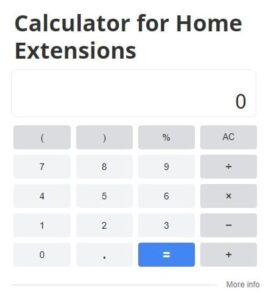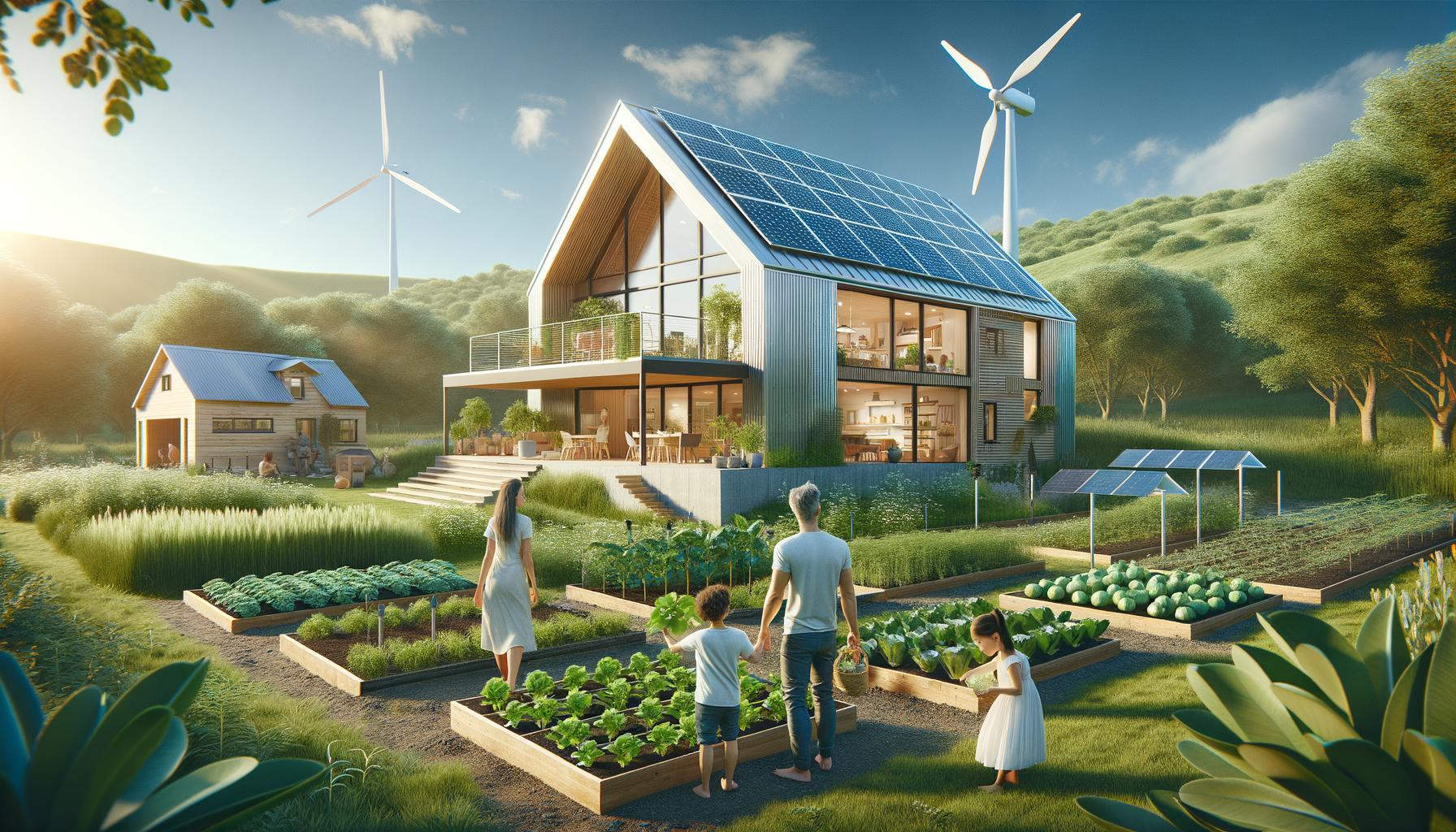
At Home Owners Association, we’ve seen a growing interest in self-sustainable homes among our members. These eco-friendly dwellings offer a path to reduce environmental impact while potentially lowering long-term living costs.
In this guide, we’ll explore the key features and practical steps to build a self-sustainable home. From energy production to water conservation, we’ll cover the essential elements that can transform your living space into a model of sustainability.
What Is a Self-Sustainable Home?
The Essence of Self-Sustainability
A self-sustainable home operates independently from external resources, minimises environmental impact, and maximises efficiency. These dwellings produce their own energy, manage water resources, and often incorporate food production capabilities.
The core of a self-sustainable home is a structure that meets its own needs for energy, water, and often food, with minimal reliance on external systems. This approach aligns with permaculture principles, which emphasise working with natural ecosystems rather than against them.
Key Components
Renewable Energy Sources
Solar panels form a cornerstone of self-sustainable homes. The Solar Energy Industries Association reports that the cost to install solar has dropped by nearly 40% over the last decade, making it an increasingly viable option for homeowners.
Water Management Systems
Rainwater harvesting and greywater recycling are essential features. These systems collect and store water for household use and allow for the reuse of water from sinks and showers for irrigation. Greywater reuse may lead to increased resilience and adaptability of local water systems, reduction in transport costs, and achievement of fit-for-purpose water use.
Environmental and Economic Advantages
Self-sustainable homes offer substantial environmental benefits. The U.S. Department of Energy states that residential solar panels can offset 100% of a home’s electricity use, potentially eliminating thousands of pounds of carbon emissions annually.
Economically, while the initial investment can be significant, long-term savings are compelling. Homeowners often see dramatic reductions in utility bills, with some achieving complete energy independence. Properties with sustainable features tend to command higher resale values (a study by the Australian Bureau of Statistics found homes with solar energy systems sold for an average of 4.1% more than those without).
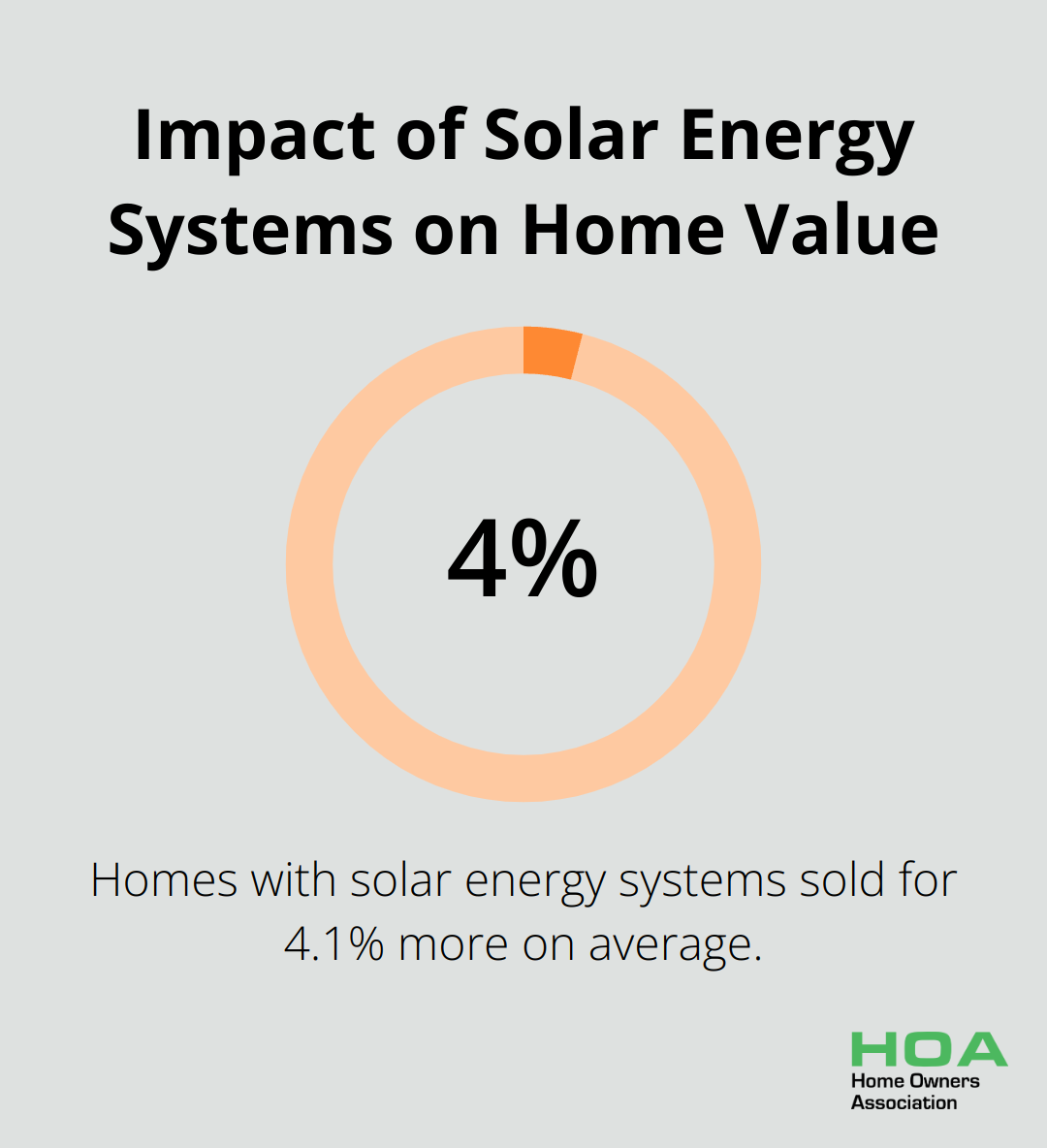
Challenges and Considerations
Building a self-sustainable home requires careful planning and often a significant upfront investment. It’s important to consider local climate conditions, building codes, and available resources. For example, in areas with limited sunlight, a combination of solar and wind energy might prove more effective than solar alone.
Homeowners who invest in self-sustainable features often report increased satisfaction with their homes and a sense of contribution to environmental conservation. However, it’s important to approach such projects with realistic expectations and a clear understanding of local regulations and available incentives.
As we move towards a more sustainable future, self-sustainable homes represent not just a trend, but a fundamental shift in how we think about our living spaces and their interaction with the environment. The next section will explore the specific features that make these homes possible, providing a roadmap for those looking to embark on their own self-sustainability journey.
What Features Make a Home Self-Sustainable?
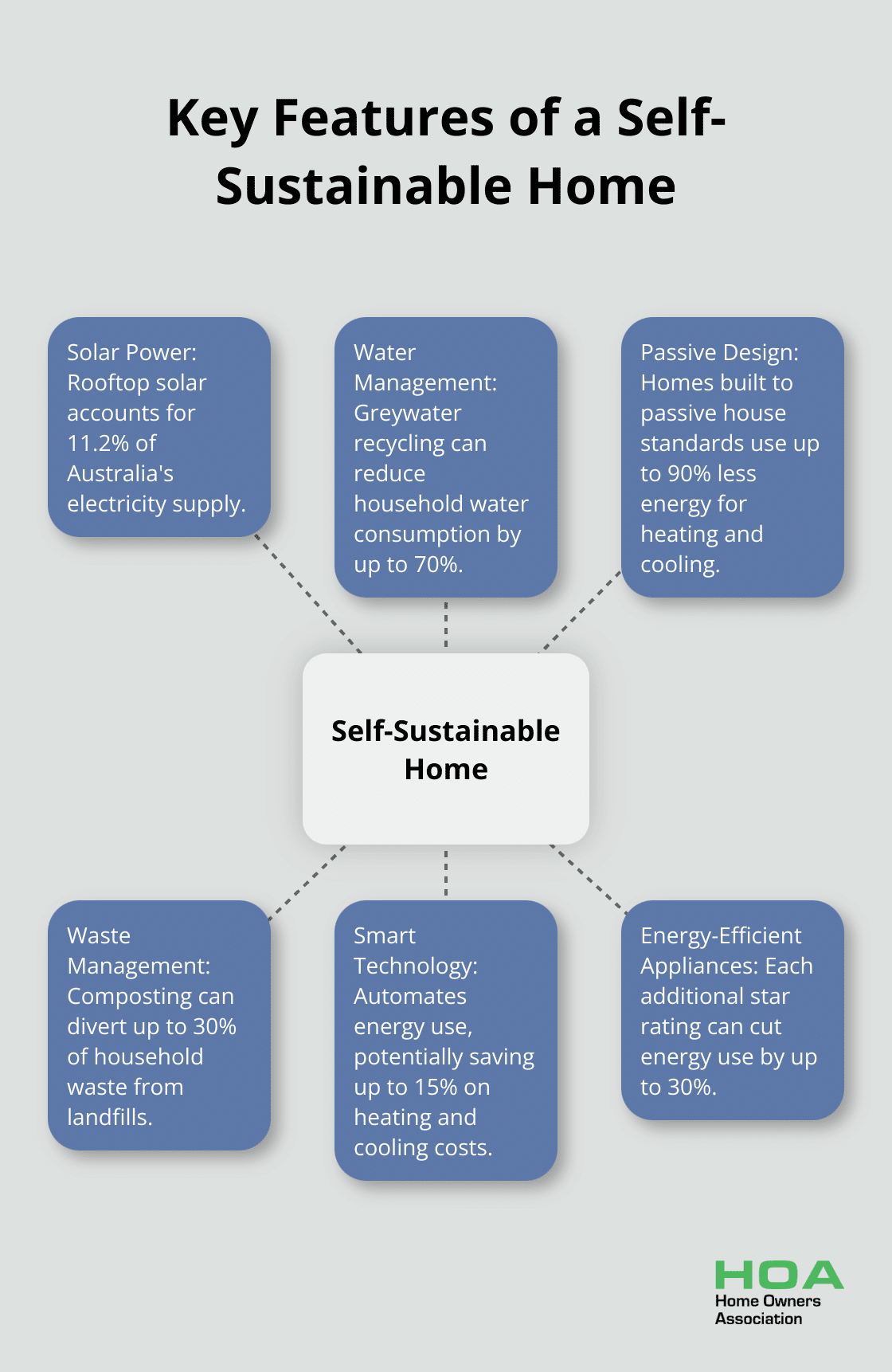
Solar Power: The Heart of Self-Sustainability
Solar energy forms the foundation of most self-sustainable homes. Rooftop solar now accounts for 11.2 per cent of Australia’s electricity supply, according to the Clean Energy Council. This trend stems from both environmental concerns and economic benefits. The most efficient residential solar panel available in Australia is SunPower’s Maxeon 7 445W module, boasting 24.1% efficiency.
To optimise solar efficiency, homeowners should consider their roof orientation and panel installation angle. In Australia, north-facing roofs typically receive the most sunlight throughout the year. However, east and west-facing panels can also prove effective, especially when combined with battery storage systems.
Battery technology has advanced rapidly. The Tesla Powerwall stores up to 13.5 kWh of energy (enough to power an average home through the night). Other manufacturers like LG and Sonnen offer similar solutions, with capacities ranging from 5 kWh to 20 kWh.
Water Management: Collection and Conservation
Water management plays a crucial role in self-sustainable homes, particularly in drought-prone areas of Australia. Rainwater harvesting systems can collect up to 100,000 litres of water annually for a typical household, depending on roof size and local rainfall patterns.
Greywater recycling systems reuse water from sinks, showers, and washing machines for irrigation or toilet flushing. These systems can reduce household water consumption by up to 70%, according to studies by the University of South Australia.
Passive Design: Climate Control Without Energy
Passive heating and cooling strategies significantly reduce energy consumption. The Australian Passive House Association reports that homes built to passive house standards use up to 90% less energy for heating and cooling compared to conventional homes.
Key passive design elements include:
- High-performance insulation (R-values of 6.0 in the roof and 2.5 in walls for most Australian climates)
- Strategic window placement for natural ventilation
- Thermal mass materials like concrete floors to regulate temperature
Waste Management: Turning Trash into Treasure
Composting and waste management solutions contribute to self-sustainability. A well-managed compost system diverts up to 30% of household waste from landfills while producing nutrient-rich soil for gardening.
For larger properties, anaerobic digesters like the HomeBiogas system convert organic waste into cooking gas and liquid fertiliser. These systems produce up to 3 hours of cooking gas daily from just 6 litres of food waste or animal manure.
Smart Technology: Optimising Efficiency
Energy-efficient appliances and smart home technology further optimise resource use. Appliances with high energy star ratings reduce energy consumption (each additional star can cut energy use by up to 30%).
Smart thermostats and home systems like Google Nest or Amazon Alexa automate energy use, potentially saving up to 15% on heating and cooling costs. These systems learn household habits and adjust temperature settings accordingly, ensuring comfort while minimising energy waste.
The implementation of these features requires careful planning and often a significant upfront investment. However, the long-term benefits in reduced utility costs and environmental impact prove substantial. Homes with these self-sustainable features not only contribute to a greener future but also often command higher resale values in the Australian property market.
As we move forward, we’ll explore the practical steps to build a self-sustainable home, from site selection to the creation of productive gardens for food self-sufficiency.
How to Build Your Self-Sustainable Home
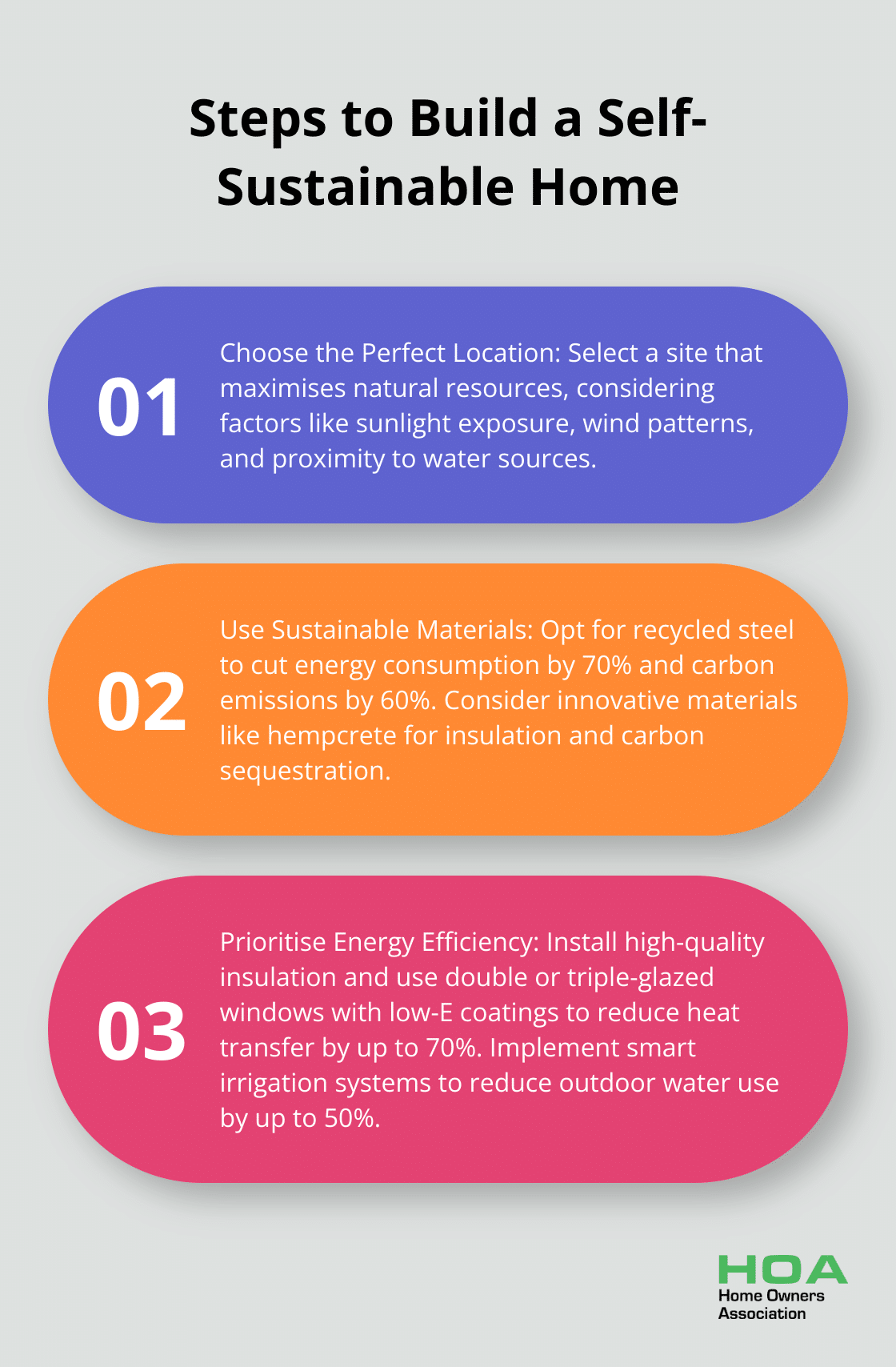
Choose the Perfect Location
The first step in building a self-sustainable home is to select the right site. Look for a location that maximises natural resources. South-facing slopes in Australia receive the most sunlight, which is ideal for solar panel efficiency. Consider wind patterns for natural ventilation and potential wind turbine placement. Proximity to water sources can benefit rainwater harvesting.
Local climate plays a key role. In hot areas, prioritise shading and cooling strategies. In colder regions, focus on heat retention. Soil quality is important if you plan to grow food. Conduct a soil test to determine its composition and fertility.
Use Sustainable Materials and Construction
When it comes to building materials, think long-term sustainability. Using recycled steel can cut energy consumption by about 70% and carbon emissions by 60% compared to new steel. Rammed earth construction, popular in parts of Australia, offers excellent thermal mass properties and uses local materials.
For timber, opt for sustainably harvested or reclaimed wood. The Forest Stewardship Council (FSC) certification ensures responsible sourcing. Consider innovative materials like hempcrete, which seizes carbon and provides excellent insulation.
Prioritise Energy Efficiency
Insulation is your home’s thermal envelope. Try to achieve R-values of at least 6.0 in the roof and 2.5 in walls for Australian climates. Natural materials like sheep’s wool or recycled denim offer eco-friendly alternatives to traditional fibreglass.
For windows, double or triple-glazed units with low-E coatings can reduce heat transfer by up to 70%. Proper sealing and weatherstripping can prevent up to 15% of heat loss through gaps.
Harness Renewable Energy
Solar panel installation is a cornerstone of self-sustainability. A 6.6 kW system in Sydney might generate, on average, about 26 kWh of solar electricity on a sunny day. In Brisbane it could be 28 kWh. Consider microinverters for each panel to optimise performance (especially in partial shade conditions).
Battery storage is essential for 24/7 power. The Tesla Powerwall 2, with 13.5kWh capacity, can power an average home overnight. For off-grid systems, include a backup generator for extended periods of low solar production.
Implement Water Conservation Strategies
Rainwater harvesting systems can provide up to 100,000 litres annually for a typical household. First flush diverters and filtration systems ensure water quality. For greywater recycling, simple gravity-fed systems can irrigate gardens, while more complex treatment systems can provide water for toilet flushing and laundry.
Low-flow fixtures are essential. Modern dual-flush toilets use just 4.5 litres per full flush, compared to older models using up to 12 litres. Smart irrigation systems can reduce outdoor water use by up to 50%.
Final Thoughts
Self-sustainable homes combine innovation, environmental consciousness, and long-term planning. These dwellings incorporate renewable energy systems, efficient water management, passive design strategies, and smart technology integration. Self-sustainable homes provide protection against rising utility costs, increase property values, and offer a sense of security and independence.
The initial investment for self-sustainable homes can be significant, and the planning process requires careful consideration of local regulations, climate conditions, and available resources. Ongoing maintenance and occasional system upgrades ensure optimal performance. Despite these challenges, the rewards of living in a self-sustainable home often outweigh the initial hurdles.
We at Home Owners Association encourage homeowners to embrace sustainable living. You can start small with a solar panel installation or a rainwater collection system, and gradually expand your efforts. Self-sustainable homes represent a fundamental shift in how we interact with our living spaces and the environment (setting a new standard for residential construction and renovation).





